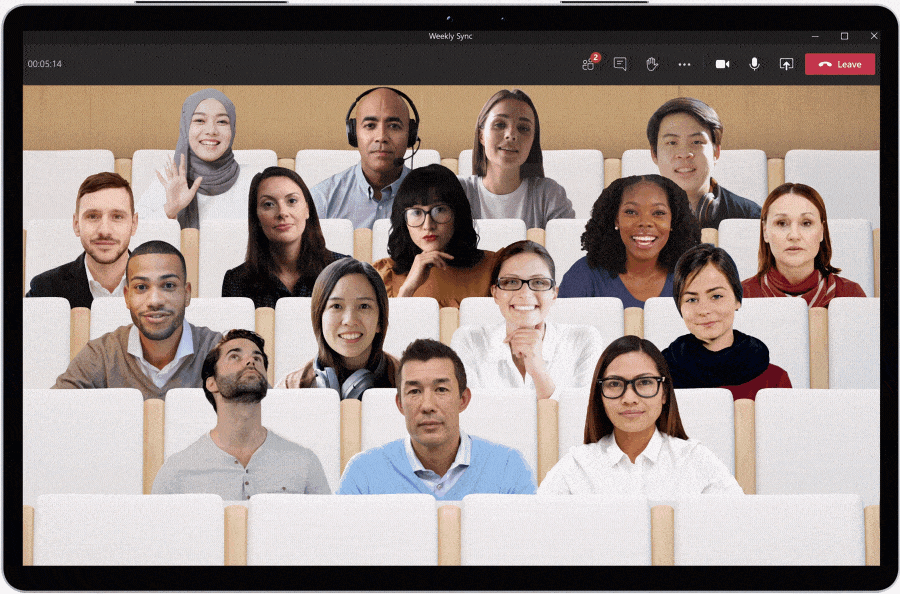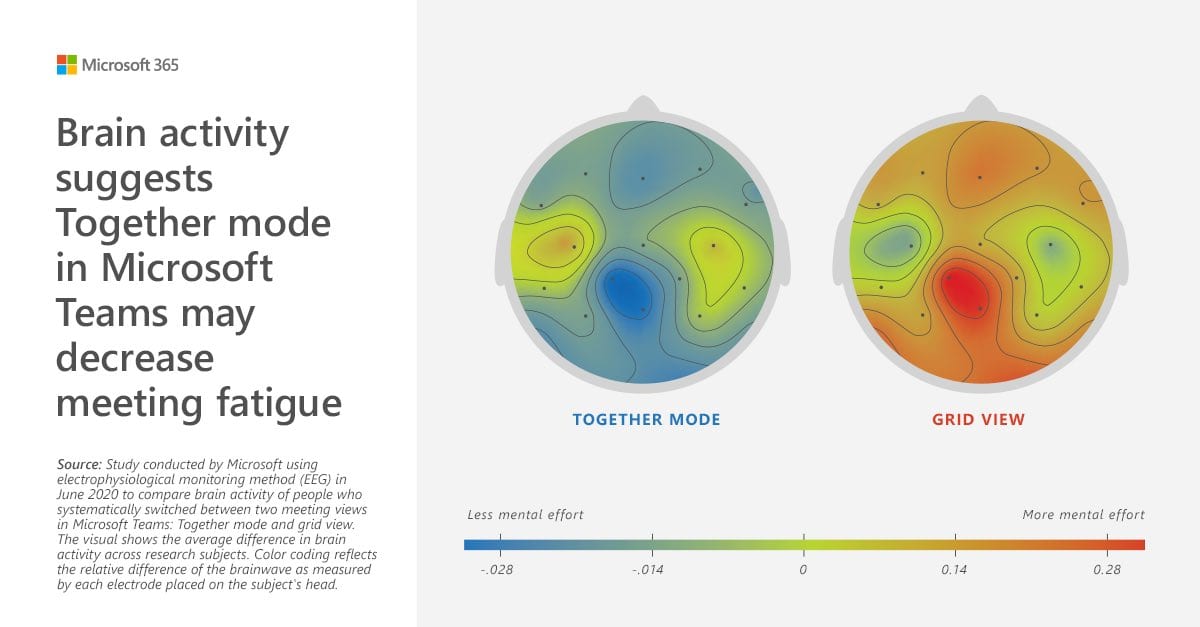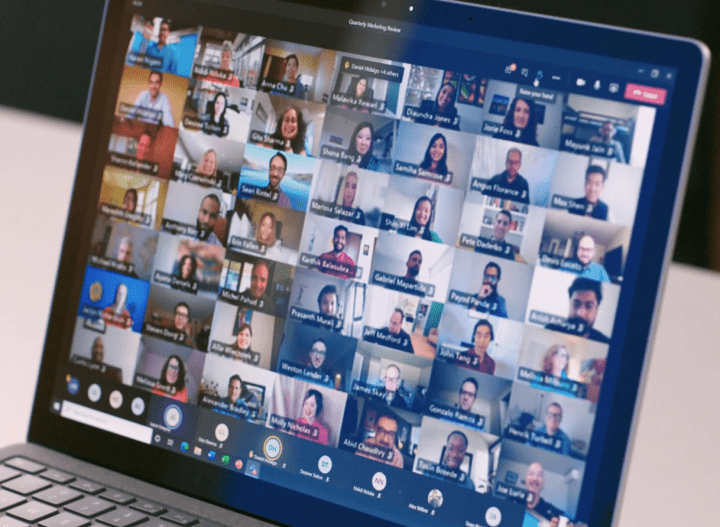What the Teams Meeting Enhancements Mean to the Enterprise
Microsoft has a very competent PR engine that is skilled at pumping news out that’s designed to thrill and excite people. We saw this happening in full flood on July 8 when Microsoft announced a set of improvements for Teams meetings. Now that the fuss surrounding the announcements has calmed down, it’s time to take a more measured look at what these developments mean for enterprise Office 365 tenants.
Background for the announcements is in Microsoft’s “the future of work” post. In addition, three other more technical posts provide detail for individual features:
The central thrust of the announcements is squarely directed at Zoom. Microsoft was caught off guard by the success of Zoom in the enterprise, consumer, and education markets once the pandemic arrived. The old Teams 2 x 2 view suddenly looked very stale and Zoom had more features and glitz than Teams could deliver. A few months later, proving that it is possible to turn a behemoth mid-stream, the intellectual power that exists within Microsoft and a healthy dose of competition means that Teams is leading the pack.
Delivery
Everyone wants to know when the new functionality will be available. That’s for Microsoft to decide, but I wouldn’t put too much faith in predicted dates. It’s better when software ships when it’s ready, and I expect that Microsoft will wait until they know that the features are scalable, robust, and secure. At least, I hope they do. And with that in mind, keep an eye on notifications in the message center in the Microsoft 365 admin center for news when features will appear in your tenant.
Togetherness in Teams
Browsing the coverage of the announcements, it’s clear that Together mode received a lot of attention. Briefly, this mode takes the video feeds from meeting attendees and separates their body from the background (like the way background effects work today to isolate someone’s image with blur or an image). The resulting feeds are then combined with a suitable background (a room or auditorium) to create the appearance that everyone’s sitting together (Figure 1).
Together mode supports up to 49 participants, so it’s dependent on the 7×7 gallery view that’s being deployed to tenants. Given that Teams is less than a svelte client, many have expressed concerns that client performance will suffer as the number of participants grows, especially when some heavy-duty image processing is needed. I expect the processing to generate together mode to be done on datacenter servers with a merged feed delivered to clients; this seems to be the only way to address the problem of how to cope with scaling numbers and extra image processing. We shall see in due course.
The Case for Together Mode
Some interesting background about how Together mode came about is revealed in another post which is worth reading. This post refers to Jeff Teper, long given credit for the development of SharePoint, as “the visionary behind Microsoft Teams, SharePoint and OneDrive.” Although Jeff certainly leads the Teams development organization now, his new visionary status must come as a surprise to Brian MacDonald, who created both Teams and Outlook. Still, Brian recently retired from Microsoft, and you’re soon forgotten when you leave a large organization.
Microsoft makes the case that Together mode may decrease meeting fatigue. A lot of work has been done to figure out what’s horrible about video conferences, ranging from the difficulty of seeing who’s speaking (especially in large gallery views) coupled with the need to continually shift focus to find the speaker, poor video placement and lighting for some participants (people being too close or too far from the camera, and so on. The theory is that these issues have a cumulative fatiguing effect on people, especially as you go from meeting to meeting during the working day. Bringing everyone together might reduce the strain, a feeling apparently backed by in research done by measuring reactions using EEGs (electroencephalogram).
Leaving aside the joyous prospect of wiring up meeting participants to EEGs, the important words in Figure 2 are “suggests” and “may.” In other words, we don’t really know yet – and a lot depends on how meetings are conducted, the material covered, the number of participants, how well organized the agenda is, and meeting length. It’s not hard to imagine how some practical improvements to how meetings are organized and run within an organization might have a more obvious impact than organizing feeds in a common background, but that’s me being over-critical again.
Even after reading the arguments advanced for why together mode helps, I’m not sure how people will take to Together mode. I think it will be popular in the education space, but the case seems less compelling in the enterprise. It might well be better than looking at 49 small boxed images in the large gallery view (Figure 3).
Personal and company culture will influence the attitude to Together mode. Some will regard arranging people into a virtual room as so much frippery and ask why Microsoft isn’t devoting their engineering talents to solving other issues within Teams. Others will like the new approach, regard it as innovation at its best, and luxuriate in being taken out of their normal surroundings to be viewed in the virtual room. As always, time will tell how Office 365 tenants react after the novelty of using Together mode wears off; they’re a diverse bunch, so you can be sure that the reaction will vary.
Dynamic View and Other Useful Changes
Outside of Together mode, several improvements are coming to make video meetings more attractive. Dynamic view means that meeting organizers and presenters can control the layout and size of feeds coming into a meeting to maximize the use of screen space. In other words, Teams will give you control over whose video feed goes where on screen.
The virtual hand up feature is intended to allow people who wish to speak to be noticed by meeting organizers and presenters. The problem is that many don’t notice the visual indicator, so Teams will now draw a yellow box around the image of the person who raises a hand to make it clearer that they wish to speak. A small, but useful improvement.
To make people look better in video meetings, Teams background filters will allow lighting levels to be adjusted (Figure 4). It remains to be seen if these filters can enliven the drabness of the average corporate conference room. No guarantee is given that the filters can do anything to improve the attractiveness of anyone’s visage, so the manufacturers of Botox can rest easy.
Live reactions have been available in PowerPoint Live since early 2020. The idea is that when people are talking, a listener can use the feedback button to display a reaction like “puzzled.” I can see this being popular in classroom, but maybe not in corporate meetings where everyone wants to look totally aware of the information being discussed.
Microsoft says that they are improving the Whiteboard app. This is badly needed because the version integrated into Teams is slow and not as functional as the online version.
Meeting Chat Improvements
Meeting chat is a great way to pose questions, record answers, or share information between call participants – if you remember to open the chat pane. Teams will now use “chat bubbles”: to superimpose messages sent by people over their video feeds. This could get very messy in large gallery views. On the upside, the live caption feature is enhanced by including the name of the person speaking alongside the live transcription of what they say.
A transcript of everything said in a meeting is generated and available afterwards – and hopefully available for eDiscovery. Stream already generates transcripts of meeting recordings, so this feature extends transcripts to all meetings, recorded or not.
New Meeting Limits
The move to increase the number of participants in a Teams meeting from 300 to 1,000 is interesting. Microsoft has steady raised the participant limit, with the last increase coming in late May. A jump from 300 to 1,000 is large, and it’s obviously a response to the needs of the large organizations that have embraced Teams who find the lower limit too restrictive. Microsoft reported in April that 20 organizations have more than 100,000 Teams user, with Accenture the leader with over 500,000 users.
Teams Live Events support larger gatherings of up to 20,000 attendees, an increase from the regular 10,000 limit that remains valid until October 1, 2020. In fact, Microsoft has a Live Events assistance program that can help organizations organize even larger gatherings up to around 100,000 attendees. Live Events need more preparation and organization than regular meetings to execute well, and it will be interesting to see if the increase in participant limit for regular meetings reduces the number of Live Events.
Cortana and Teams
People with accounts in U.S. hosted tenants will be able to use Cortana to interact with the Teams mobile app, much like people can use Outlook mobile’s Play my Emails feature to process email. The reason why the limitation exists is that the Cortana services are only hosted in U.S. datacenters and only available in U.S. English. Without the ability to translate voice commands into something that an app can do, like “Call Brad,” Cortana-based features can’t work.
The Enterprise Scorecard
Overall, there’s lots of glitz and competitive positioning in these announcements. Microsoft is showing that it can deliver innovative features that are truly different through a combination of software engineering and massive datacenter resources. Large enterprises will welcome the increased meeting limits, the improvements made to meeting chats and transcripts, and dynamic view. Filters, hands up, and live reactions are moderately interesting the first time you see them but will soon by bypassed by the next new feature that comes along.
Which leaves Together mode. There’s no doubt this is an interesting new take on video gatherings, but we don’t know how the average enterprise will take to the new mode. I’ll have to experience Together mode in action over a few meetings with different numbers of participants to understand if it really is a breakthrough in online meeting technology.







